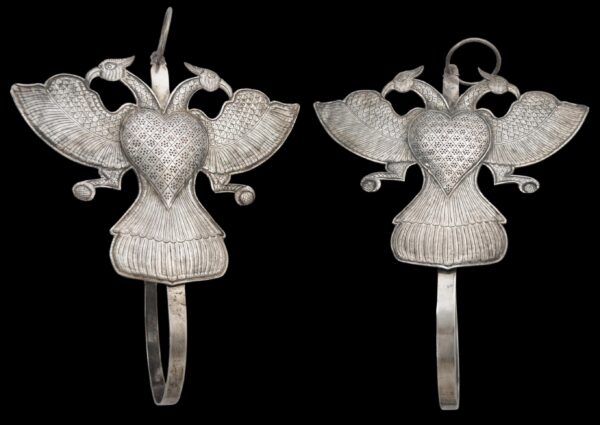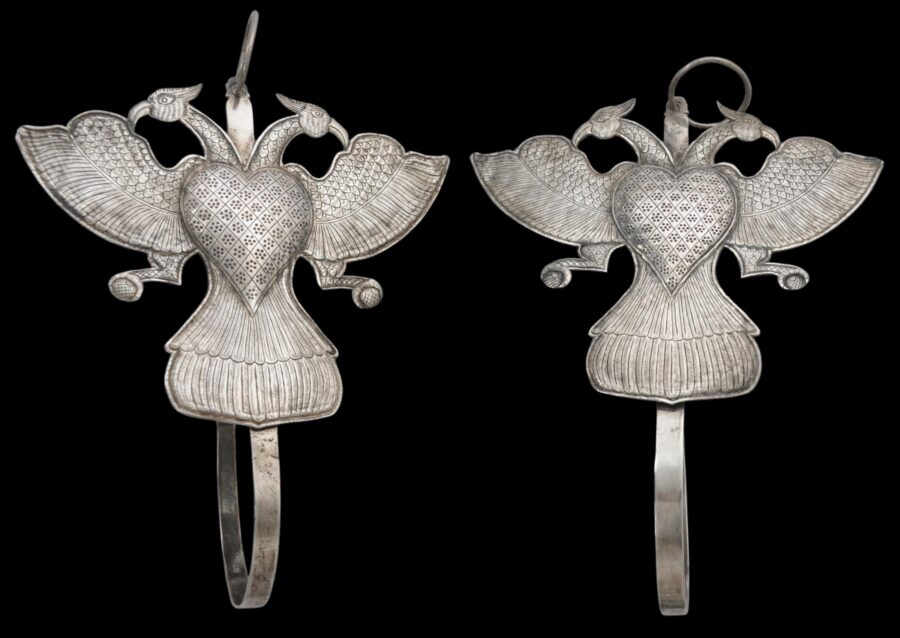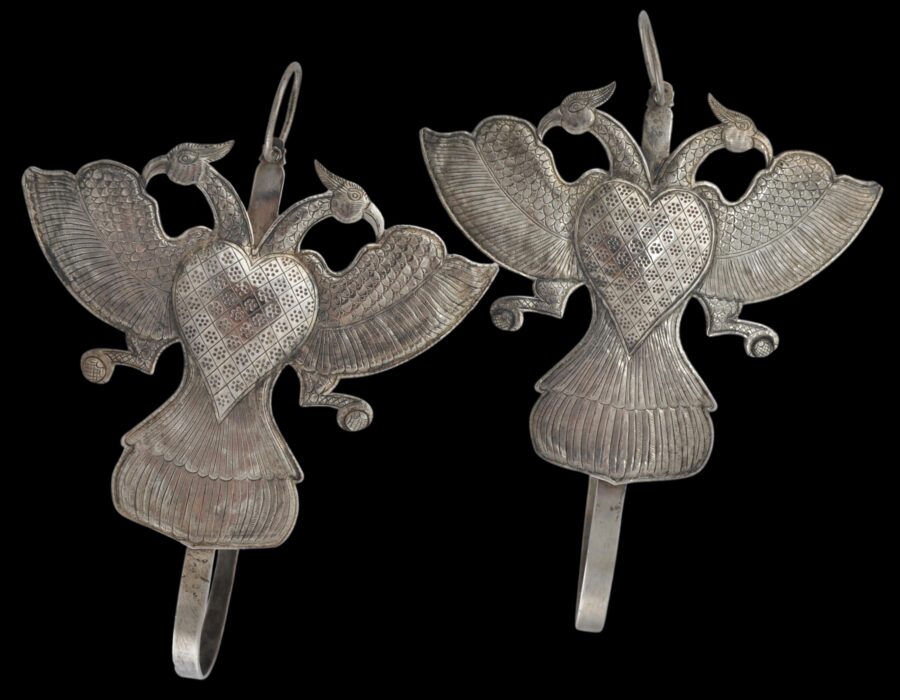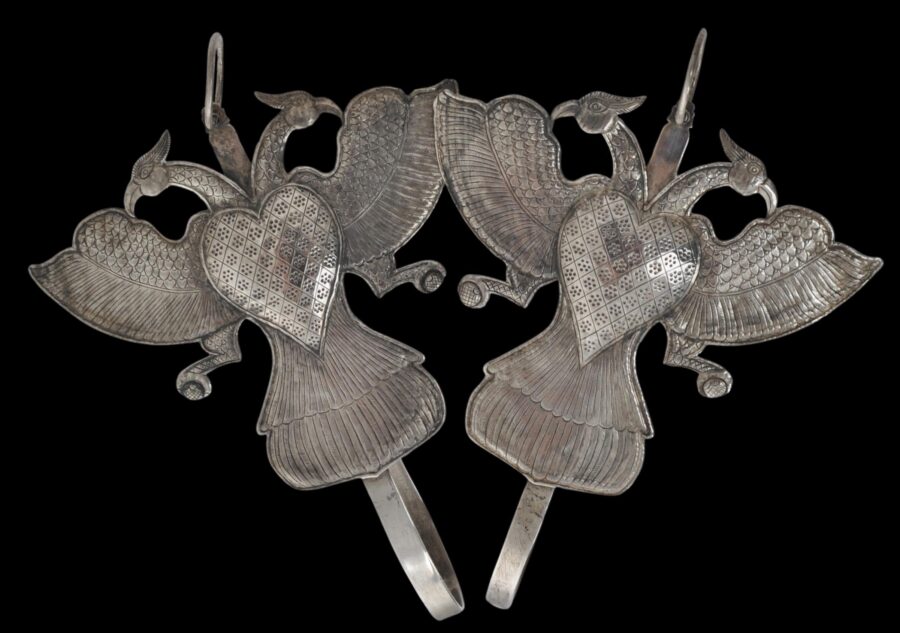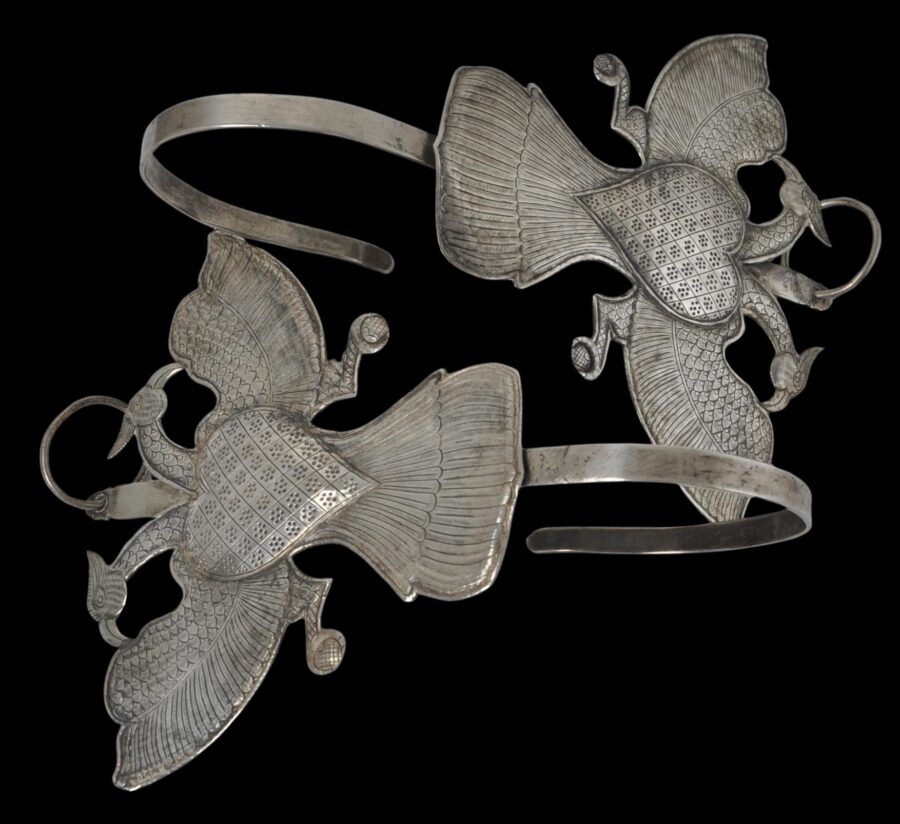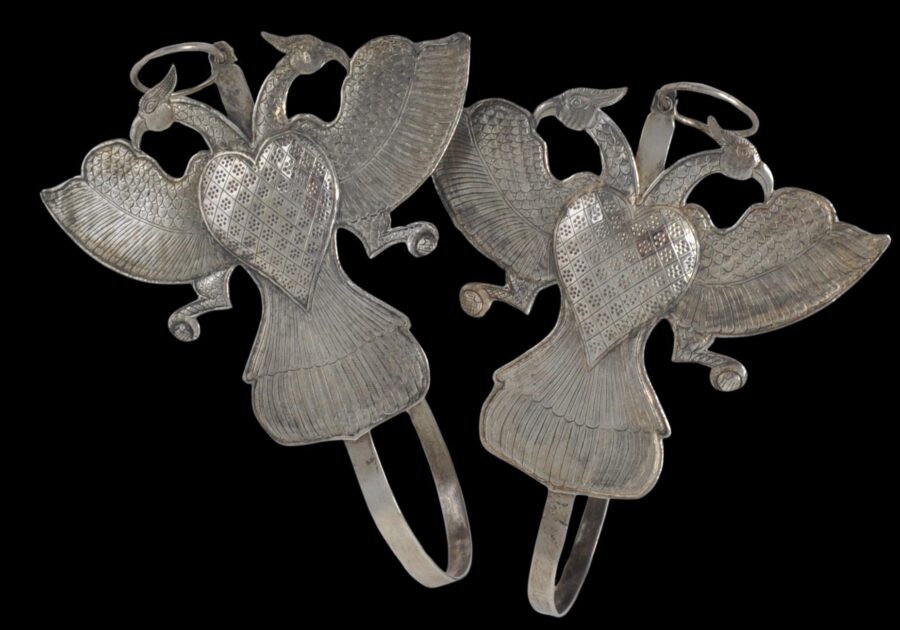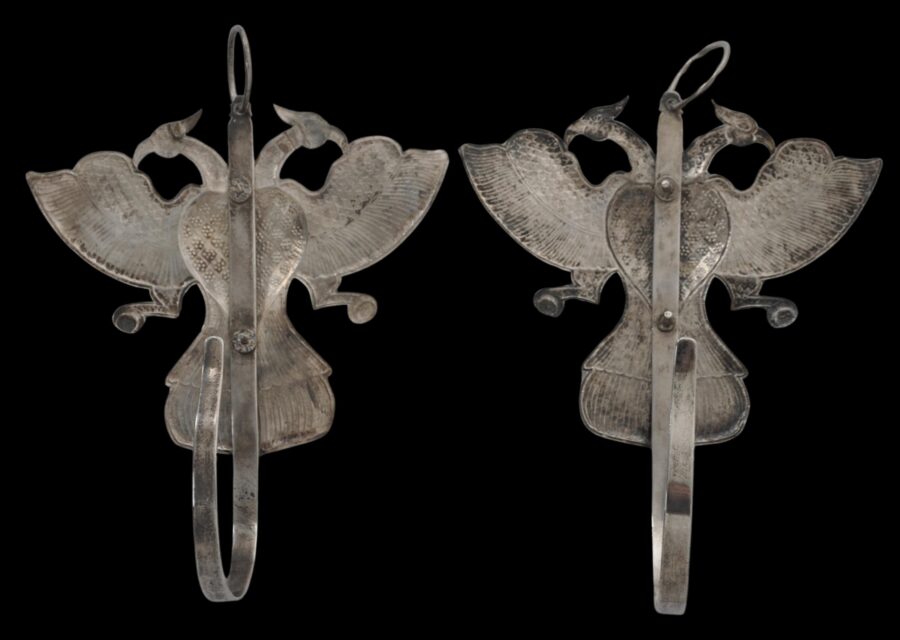This unusual pair of curtain hooks made of chased and engraved silver is in the from of a pair of double-headed eagles with wings outstretched and heart-shaped motifs for bodies.
Hooks such as these were used on poster beads in the Dutch East Indies to hold back mosquito netting during the day. They were suspended by chains from the top of the bed canopy and the netting would be bunched into each hook to create an opening in the curtains that were suspended from the canopy.
The double-headed eagle is a symbol associated with European royalty but also with the royal house of Mysore in India, where the symbol is known as the Gandaberunda. The Russian royal family also used the symbol, as did other European royals. The motif was also used in Sri Lanka. In the Dutch East Indies, it was used as a motifs on chests and filigree boxes, sometimes to decorate key escutcheons.
The pair here could have been used either by Dutch colonialists or by a local peranakan Chinese family who also used such decorative netted curtain hooks. It is likely this pair is from the Dutch East Indies (Indonesia) today. It is possible also that they are from Sri Lanka which was also administered by the Dutch and the Dutch East India Company (VOC).
The pair is in a fine condition.
References
Eliens, T.M., Silver from Batavia/Zilver uit Batavia, Gemeentemuseum Den Haag/W Books, 2012.


